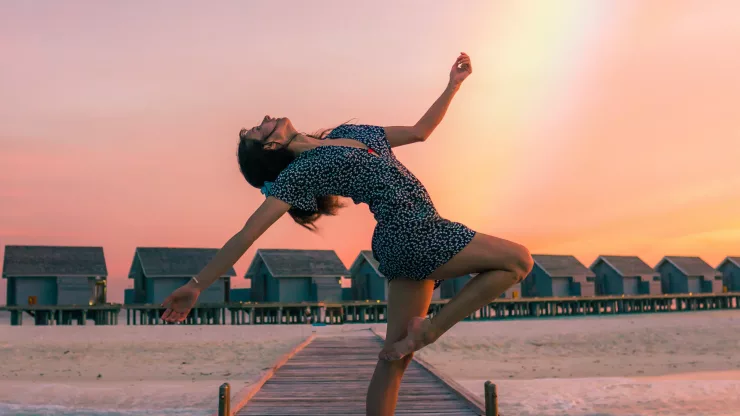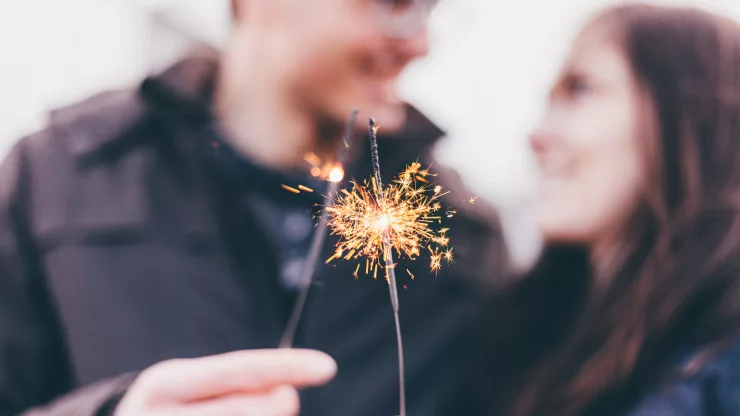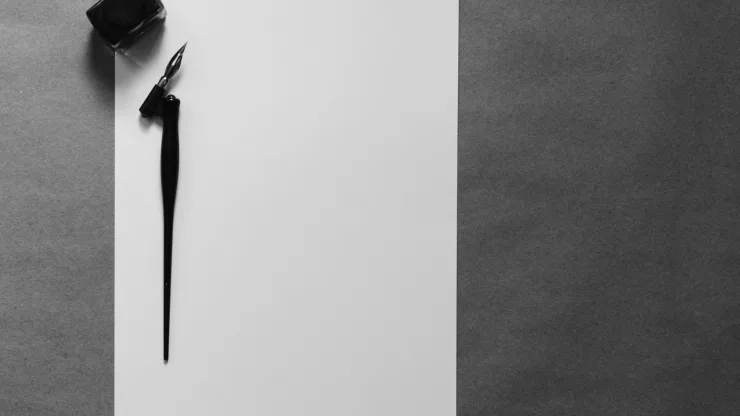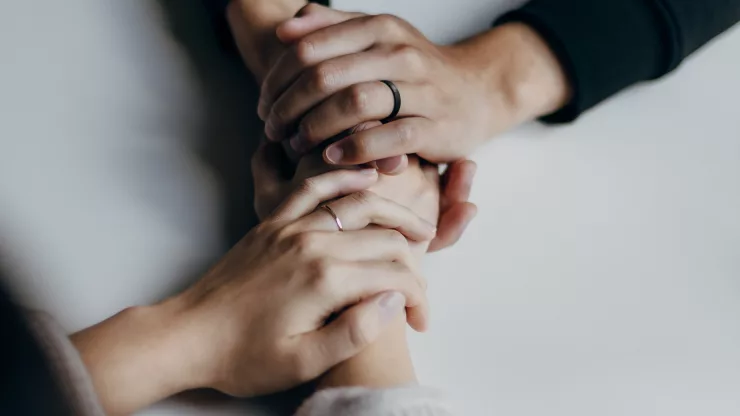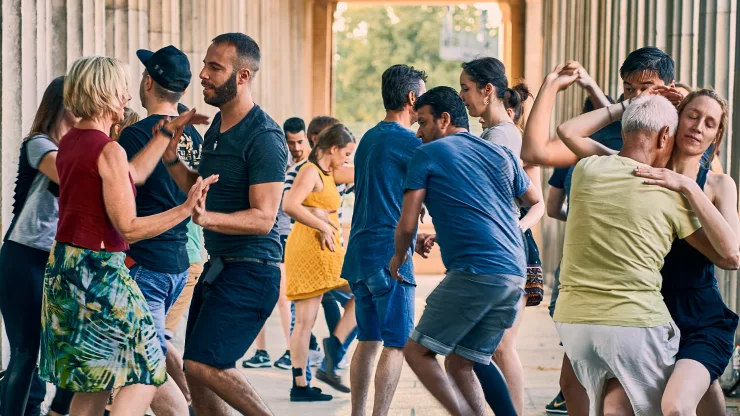Jump to Section
Discover the Joy of Nia Dance
If you’re looking for a fun and effective way to improve your physical and mental health, Nia dance may be just what you need. This unique form of exercise combines elements of dance, martial arts, and mindfulness to create a holistic mind-body workout that can help you feel more energized, focused, and joyful.
Nia dance isn’t just a fitness trend – it’s a movement that’s been growing in popularity since the ’80s. Today, people all over the world are discovering the benefits of Nia, from increased flexibility and strength to reduced stress and improved self-awareness. In this article, we’ll explore the origins of Nia dance, its techniques and benefits, and how you can get involved in this vibrant community of dancers and movement enthusiasts.
The Origins of Nia Dance: A Fusion of Movement and Mindfulness
Nia dance was created in the early 1980s by fitness instructor Debbie Rosas and dancer/choreographer Carlos AyaRosas.
The two wanted to create a fitness program that was more enjoyable and holistic than traditional aerobic workouts, which often focused solely on physical conditioning.
They drew inspiration from a variety of movement styles, including jazz dance, tai chi, and yoga, as well as Rosas’ own experiences with healing from injuries and chronic pain.
The name "Nia" stands for "neuromuscular integrative action," reflecting the focus on integrating the mind, body, and spirit in each movement.
Nia dance classes typically include a mix of choreographed routines and free-form movement, with an emphasis on listening to your body and expressing yourself creatively.
The music ranges from world beats to pop hits, and dancers are encouraged to let their personalities shine through their movements.
Nia Dance Techniques: Express Yourself and Connect with Your Body
One of the unique aspects of Nia dance is its focus on pleasure and self-expression.
Unlike many workout routines that are focused on "burning calories" or achieving a certain body type, Nia dance encourages dancers to move in ways that feel good and authentic to them.
This can help build a positive relationship with your body and increase your confidence and self-esteem.
Nia dance also incorporates elements of mindfulness and body awareness. Dancers are encouraged to pay attention to their sensations and emotions as they move, and to explore different ways of moving that feel comfortable and safe.
The movements themselves are designed to improve flexibility, strength, and balance, and can be adapted to different fitness levels and abilities.
The Benefits of Nia Dance: Mindfulness, Fitness, and Stress Relief
There are many potential benefits to practicing Nia dance, both physical and mental. Here are just a few:
- Improved cardiovascular health: Nia dance can be a great cardio workout, helping to strengthen your heart and lungs and improve circulation.
- Increased flexibility and strength: The movements in Nia dance can help improve your range of motion and build muscle tone.
- Reduced stress and anxiety: The mindfulness and self-expression aspects of Nia dance can help reduce stress and anxiety and improve mood.
- Enhanced self-awareness and body image: Nia dance encourages dancers to listen to their bodies and move in ways that feel good, which can help improve body image and self-esteem.
- Community and connection: Nia dance classes can be a great way to connect with others who share your love of movement and wellness.
Nia Dance Styles: Explore the World through Movement
One of the fun aspects of Nia dance is its incorporation of movement styles from around the world. Some of the styles you might encounter in a Nia class include:
- Jazz dance: Nia dance draws on the fluid, expressive movements of jazz dance, which originated in African American communities in the early 20th century.
- Tai chi: The slow, flowing movements of tai chi are a popular component of Nia dance, helping to improve balance and body awareness.
- Yoga: Nia dance incorporates some yoga poses and stretches, helping to improve flexibility and reduce stress.
- Martial arts: Nia dance includes some elements of martial arts, such as kicks and punches, which can help improve strength and coordination.
Join the Nia Dance Community: Embrace a Healthier, Happier Lifestyle
If you’re interested in trying Nia dance, there are many ways to get involved. You can look for local classes in your area, or try online classes from the comfort of your own home.
You might also consider becoming a certified Nia teacher, which can allow you to share your love of movement and mindfulness with others.
The Nia community is a vibrant and supportive group of people who are passionate about health, wellness, and self-expression.
Whether you’re a seasoned dancer or a total beginner, there’s a place for you in the world of Nia.
So why not give it a try and see how this exotic form of movement can enhance your happiness and well-being?
FAQ
What should I wear to a Nia dance class?
You should wear comfortable, breathable clothing that allows you to move freely. Many Nia dancers prefer to wear bare feet or dance shoes that allow for flexibility and good grip on the floor.
Do I need any prior dance experience to try Nia?
No, Nia dance is designed to be accessible to people of all ages and fitness levels, regardless of their dance experience. The movements can be modified to suit different abilities and preferences.
Is Nia dance a good workout for weight loss?
While Nia dance can be a great cardiovascular workout and help build muscle tone, it’s not necessarily a weight loss program. However, by improving your overall fitness and reducing stress, Nia dance may help support healthy weight management.
Can I do Nia dance if I have an injury or chronic pain?
Nia dance can be a great option for people who are recovering from injuries or dealing with chronic pain.
The movements can be adapted to suit your needs and limitations, and the focus on mindfulness and body awareness may help reduce pain and improve healing.
However, it’s always a good idea to check with your doctor or physical therapist before starting any new exercise program.

With a deep passion for personal development, Ben has dedicated his career to inspiring and guiding others on their journey towards self-improvement.
His love for learning and sharing knowledge about personal growth strategies, mindfulness, and goal-setting principles has led him to create My Virtual Life Coach.
Contact Ben at [email protected] for assistance.
